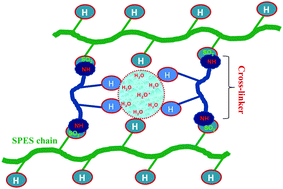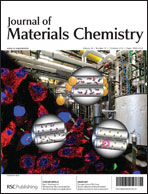Disulfonated 4,4′-bis(4-aminophenoxy)biphenyl-3,3′-disulfonic acid (BAPBDS) was synthesized as cross-linking agent. In situ cross-linking of sulfonated poly(ether sulfone) (SPES) via sulfonamide linkage was achieved using BAPBDS, for preparing polymer electrolyte membranes (PEMs), without deterioration in membrane functionality due to cross-linking. Effective cross-linking enhanced the membranes’ dimensional, thermal, and chemical stability without impairing the electro-chemical properties such as ion-exchange capacity and proton conductivity. Thus, the properties of the developed PEMs were significantly improved due to more compact structure of the cross-linked SPES membrane (CPES) over membranes without crosslinking. Comparable selectivity parameter (SP) and direct methanol fuel cell (DMFC) performance of the developed membranes, especially CPES-100, with Nafion 117 (N117) indicated their suitability for fuel cell applications.
You have access to this article
 Please wait while we load your content...
Something went wrong. Try again?
Please wait while we load your content...
Something went wrong. Try again?


 Please wait while we load your content...
Please wait while we load your content...